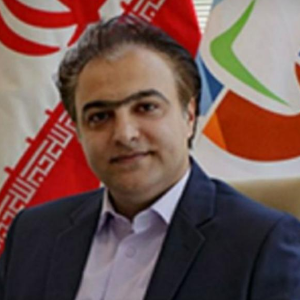Title : Nonlinear features of EEG and MRI for the diagnosis of mild Alzheimer's disease
Abstract:
Alzheimer's disease is a progressive degenerative disease commonly seen in the elderly. Symptoms of this disease include memory loss, judgment and important behavioral changes in the person. The main purpose and motivation of this study was to design and present a model for the diagnosis of mild Alzheimer's disease. Due to the nature of this disease and its various stages, it is not possible to provide an optimal cognition system without proper knowledge and study. Alzheimer's disease with loss of neuronal synapses in some areas of the brain, necrosis of brain cells in different areas of the nervous system, the formation of spherical protein structures called aging plaques outside neurons in some areas of the brain, and fibrous protein structures called coils. A spiral is identified in the cell body of neurons. The disease is rapidly increasing and effective and definitive treatment depends on early detection of the disease. According to the characteristics of ERP signals, EEG and MRI images and how this disease is related to different features in brain signals and images, this disease can be diagnosed in the early stages with proper processing. In this project, brain subjects and MRI images of 40 subjects were recorded. According to the memory test, the subjects were divided into 3 groups: 19 healthy people, 10 mild patients and 9 severe patients, and the dementia test was performed separately from dementia. First, processes in the field of time and frequency and extraction of various nonlinear features such as Lyapunov view, then correlation and entropy according to the nonlinear and chaotic nature of brain signals and extraction of MRI features such as temporal lobe atrophy, white matter volume and Gray, cerebrospinal fluid and asymmetry have been performed and then the optimal features have been extracted by methods of analysis of variance, genetic algorithm and principal component analysis. Finally, Elman, SVM, and LDA classifiers have been used, and in a combined mode, two CNN classifiers and a perceptron network have been used to combine brain signals and MRI images. Been paid. The important point is that among the three channels Pz, Cz, Fz and among the four modes of closed eye, open eye, reminder and stimulation, the accuracy of Pz channel results and excitation mode is more compared to other channels and modes. Using the Pz channel characteristics and combining with the MRI image features, the accuracy of the LDA classifier performance was about 65.3% in the reminder mode and 67.4% in the excitation mode, while the accuracy of the Pz channel results was supported by the RBF core vector vector machine. In the reminder state it is 76.3% and in the stimulation state 78%, and in the Elman neural network the resolution of separation was 95.9% in the reminder state and 98.8% in the stimulation state. And in the severely ill group it is 97.5%. The use of a combination of brain signal features and MRI images reduced the accuracy of the LDA and SVM results in the three groups and increased the accuracy of Elman neural network result.
Keywords: Alzheimer's disease, EEG, MRI, Nonlinear features, Elman neural network, Deep neural network.


